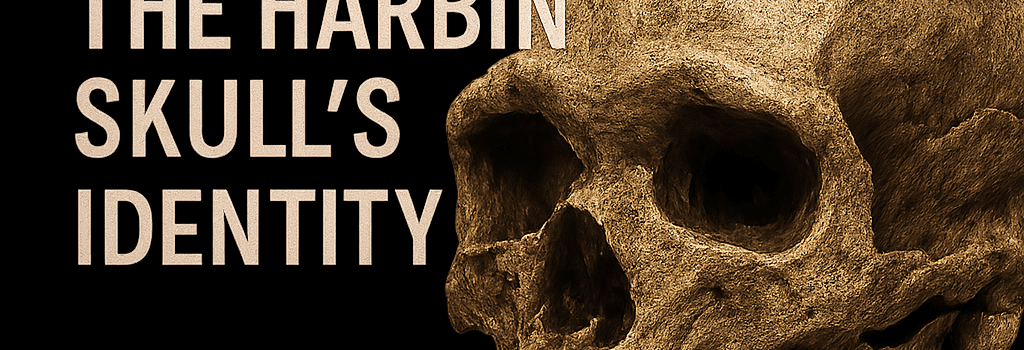Denisovan: Revealing the Harbin Skull’s Identity

For nearly a century, a robust hominin cranium excavated in Harbin, China, lay in obscurity. Only in 2021 did paleoanthropologists formally describe it as Homo longi (“Dragon Man”). Now, advanced paleoproteomics confirms that this almost perfectly preserved, 146,000-year-old skull belongs to a Denisovan—our long-lost relative known mostly from DNA fragments.
From ‘Dragon Man’ to Denisovan
The Harbin skull exhibits a mosaic of archaic and modern traits: a long, low cranial vault (~1,420 cm3 capacity), prominent supraorbital tori, a wide, flattened face, and massive molars. These features led Ji et al. (2021) to erect a new species, H. longi. Yet the interim genomic vacuum—failed attempts at extracting ancient DNA—left room for debate.
“New genetic material will test the relationship of these populations,” the 2021 authors noted. Proteins, more resilient than DNA, have now filled that gap.
Advancements in Paleoproteomics Techniques
In a study published June 2025 in Science, Ni et al. applied liquid chromatography–tandem mass spectrometry (LC-MS/MS) to temporal bone samples. Out of 95 identified proteins—principally collagen type I alpha‐1 and enamelin fragments—four harbored amino acid polymorphisms diagnostic of Denisovans. Three matched exactly known Denisovan variants cataloged in the Altai and Tibetan genomes.
- Sample preparation: Non-destructive decontamination with UV and EDTA.
- Peptide sequencing: Deep-learning-assisted spectrum matching via the new DeepPeptide tool (Max Planck, 2024).
- Lineage assignment: Phylogenetic placement with Bayesian tip-dating integrated into the OpenMS pipeline.
Reconstructing Denisovan Biology and Behavior
Beyond taxonomy, the Harbin cranium offers insights into physiology and ecology. The robust masticatory apparatus suggests a diet rich in tough vegetation and possibly meat—comparable to high‐altitude Tibetan Denisovan finds dated ~100 ka. Cranial vault thickness and diploë structure imply adaptation to cold climates, echoing genomic signals of fatty-acid metabolism genes (e.g., FADS cluster) identified in Denisovan DNA incorporated into modern Tibetan high-altitude populations.
Implications for Hominin Phylogeny
Integrating the Harbin evidence refines our hominin tree. Using a combined dataset of morphological and proteomic characters, Bayesian phylogenies now place Denisovans as a sister clade to the Neanderthal–H. sapiens split around 450 ka. This supports genomic estimates of a common ancestor nearly half a million years ago.
Ghost Lineages No More
Denisovans—once a “ghost lineage”—are stepping out of the shadows. Besides the Harbin skull, similar cranial fragments from Dali (200–260 ka), Hualong Cave (~300 ka), and Jinniushan (~260 ka) may represent Denisovan diversity. Preliminary proteomic screens on these specimens are under way at the Chinese Academy of Sciences, aiming to map geographic variation across East Asia.
Future Research Directions
- Expanded paleoproteomic surveys: Applying optimized EDTA-demineralization and nanoLC protocols to additional Chinese and Southeast Asian fossils.
- Ancient DNA hybrid capture: Combining targeted mtDNA and nuclear probes with single-stranded library prep to recover low-yield Denisovan sequences.
- Functional genomics: Expressing Denisovan‐specific enamel and collagen variants in vitro to assess their biomechanical properties.
Conclusions
The Harbin skull’s reclassification as Denisovan transforms our understanding of archaic human diversity. It bridges the gap between fragmentary genetic evidence and fossil morphology, showcasing the power of cutting-edge proteomics. As researchers apply these methods globally, more “ghost” populations may emerge from the past, reshaping the narrative of human evolution.